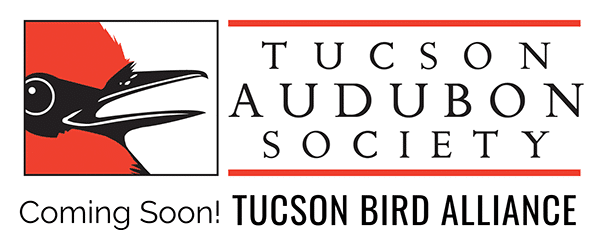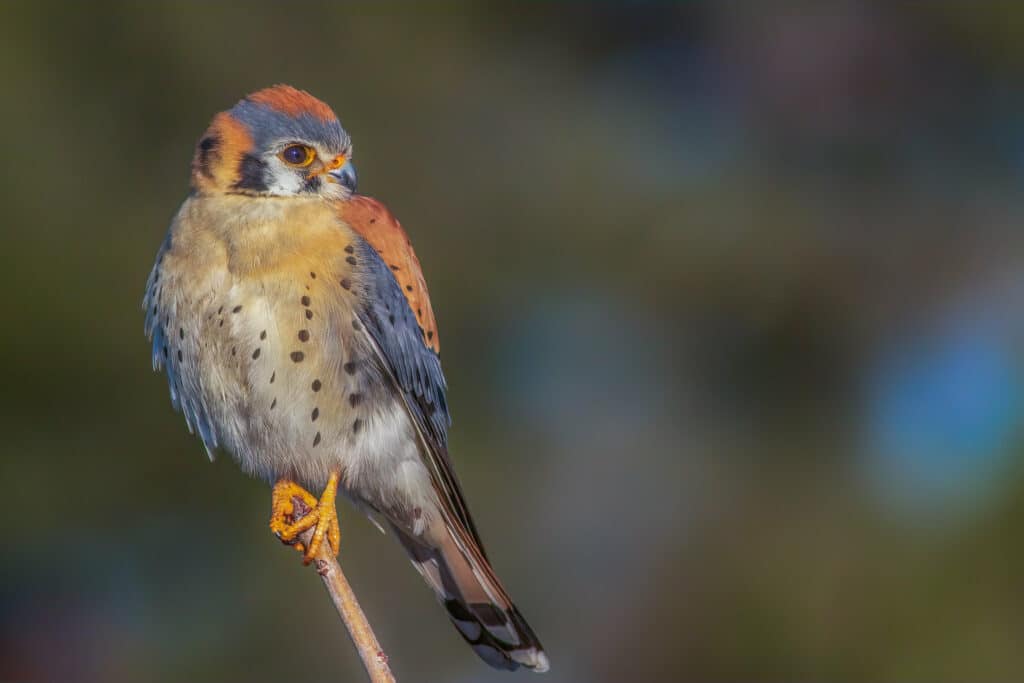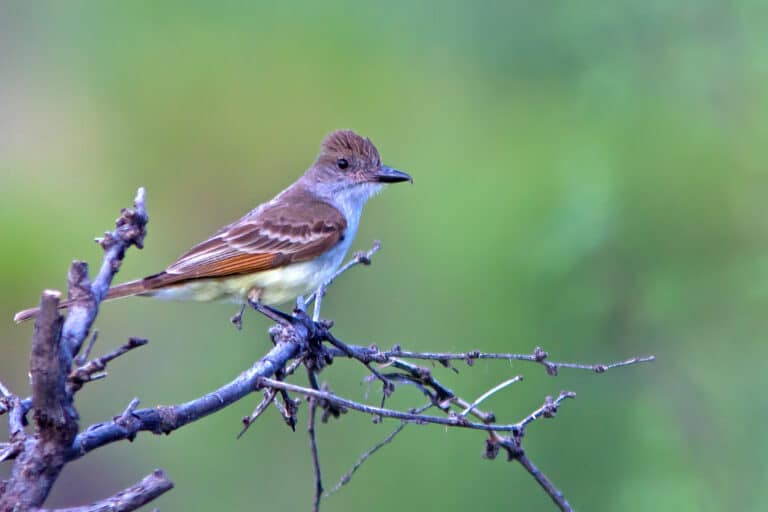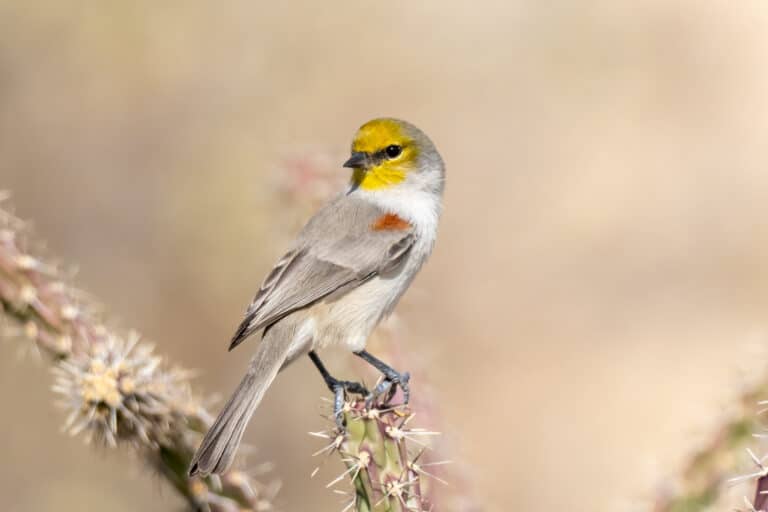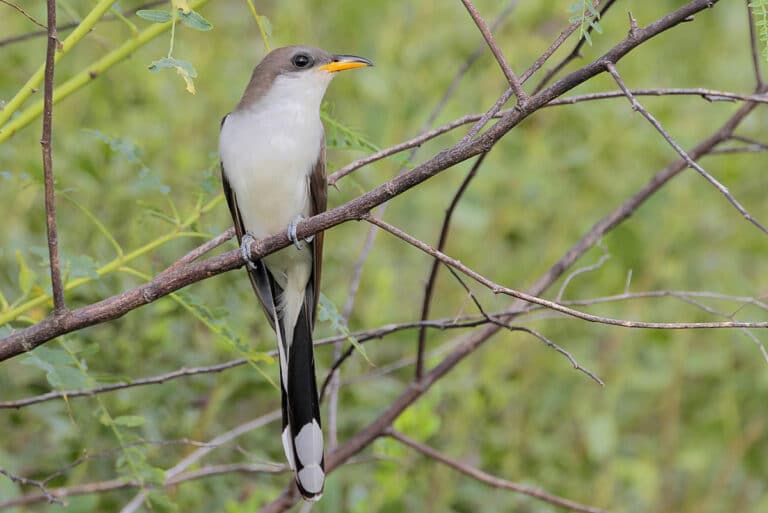The American Kestrel has got to be one of the most beautiful and colorful raptors out there. Try to get a really good look the next time you see one perched on a line along a road or atop a saguaro in the desert. This species, the smallest and most common falcon in North America, is sexually dimorphic—the males and females have different plumage patterns. The male has blue-gray wings and a rufous tail with a single broad subterminal black band, while the female’s wings are rufous and black-scalloped and the tail is black barred. Both sexes have the strikingly patterned head and facial markings, including two false eye spots on the nape that can confuse predators when viewed from behind.
Formerly known as the Sparrow Hawk, the American Kestrel is the only kestrel in the Western Hemisphere (there are 12 others world-wide) and is found from Alaska to the southern tip of South America. Most of the populations are permanent residents, but the northernmost birds of Canada migrate south for the winter. American Kestrels favor open habitats with short vegetation and few trees affording them good views from perches or while hovering when searching for prey, usually insects, small rodents, and sometimes small birds.
American Kestrels are secondary cavity nesters, and in the Sonoran Desert they routinely use woodpecker-created holes in saguaros. The male searches for possible nesting locations, and when he’s found a suitable candidate, he shows it to the female and entices her with offerings of food. During breeding season, males advertise their territory by repeatedly flying up, diving, and giving a short series of loud, excited klee! calls. Competition for these nest cavities is fierce, you can help by putting up a nestbox that can be purchased at our Nature Shop.
Image by David Kreidler
